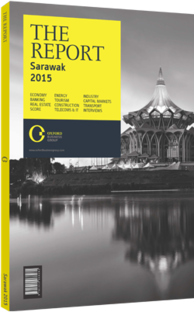The central bank takes steps to prevent a housing bubble in Sarawak
Fuelled by attractive yields and soaring property values over the last five years, Malaysia’s real estate market has drawn both foreign and local investors seeking a strong return. While growth in GDP and population are partly responsible, this organic growth does not entirely explain the price escalation seen in the residential sector over the past three years. And although the factors steering Sarawak's property market differ from those affecting Peninsular Malaysia – the chief target of regulatory changes – the state would not be immune to fallout from a national price correction.
Concerned that runaway prices could put home ownership out of reach for many and fuel a risky property bubble, in 2013 the government took deliberate action to rein in the market. The three main measures, meant to put a drag on the sector, were to raise Real Property Gains Tax (RPGT), cap loan-to-value (LTV) ratios and ban Developers Interest Bearing Schemes (DIBSs).
TREND SETTING: After rising by an average of just 3.6% in 2001-10, house prices began to spike in 2011, with double-digit growth in every quarter from the end of 2011 to the middle of 2013, according to the National Property Information Centre. Following this prodigious leap, property transactions were the first sign to hint at a possible market correction starting in late 2012, when they fell 8.6% in the fourth quarter and another 12.6% in the first half of 2013, according to the central bank, Bank Negara Malaysia (BNM).
With a close eye on these trends, the Malaysian government and the BNM have since passed increasingly strict regulations on the market. The latest rounds, rolled out in July and November 2013, came after BNM conducted studies and characterised lending practices as “incompatible with prudent affordability assessments and responsible lending behaviour”. Its chief concerns were three: the lengthening repayment tenures for new housing loans (up to 45 years); excessively long repayment tenures for personal financing offered by non-bank financial institutions (up to 25 years); and increased lending to housing development projects that were being financed by interest capitalisation schemes (ICS) – including DIBS.
In response to the first two items – increasing loan tenures – the BNM limited repayment periods on loans for property purchases to 35 years and those for personal financing to 10 years. It also banned personal financing facilities, loans that are pre-approved without an application from the borrower.
Regarding the third concern, the BNM concluded that DIBSs had inflated property prices by as much as 30% and encouraged speculation by lowering buyers’ entry costs. Its response, which received mixed reviews, was to prohibit lenders from financing property development through DIBS or other forms of ICS.
Later in 2013, having previously lowered the RPGT, the government raised it again for the 2014 national budget, thus continuing its varying mood about the tax. In its current incarnation, in force as of January 1, 2014, an RPGT of 30% is imposed on gains from sales of properties owned by Malaysian nationals for three years or less, with the rate declining to 20% for sales in the fourth year of ownership and 15% in the fifth. Sales made after five years of ownership are exempt.
The new scheme is also less forgiving for foreign buyers. Expatriates are taxed at 30% on any capital gains made from property sales before the fifth year of ownership, with sales in any subsequent year taxed at 5%. These changes mark the fourth time in four years that the RPGT scheme has been altered: rates have varied between 5% and 30% since 2010, while the number of years applicable has ranged from two to five.
These moves come on top of the BNM’s previous efforts to curb speculation, most notably the 2010 caps on loan-to-value ratios at 70% for individuals who own two homes, and at 60% for non-individuals. Either through these measures by self-correction, the market responded as the government had hoped. Growth in the Malaysian house price index declined from 12.2% in the fourth quarter of 2013 to 9.6%, 9.6%, 8.4% and 7.9% in subsequent quarters over the course of 2014.
You have reached the limit of premium articles you can view for free.
Choose from the options below to purchase print or digital editions of our Reports. You can also purchase a website subscription giving you unlimited access to all of our Reports online for 12 months.
If you have already purchased this Report or have a website subscription, please login to continue.

